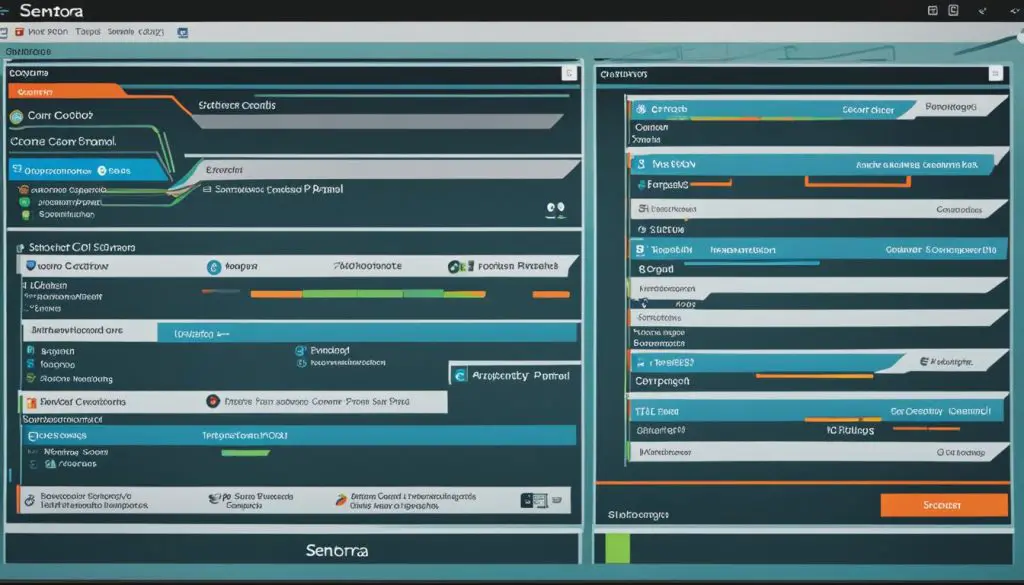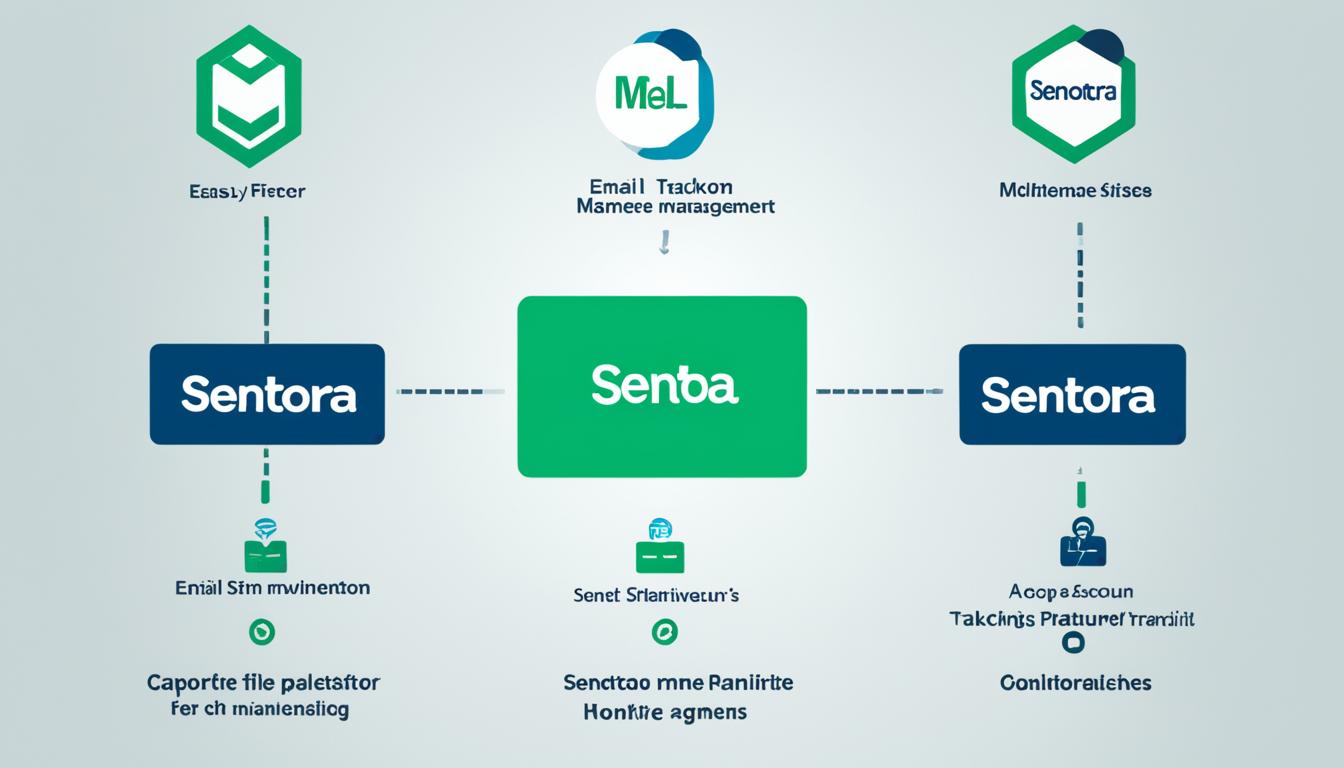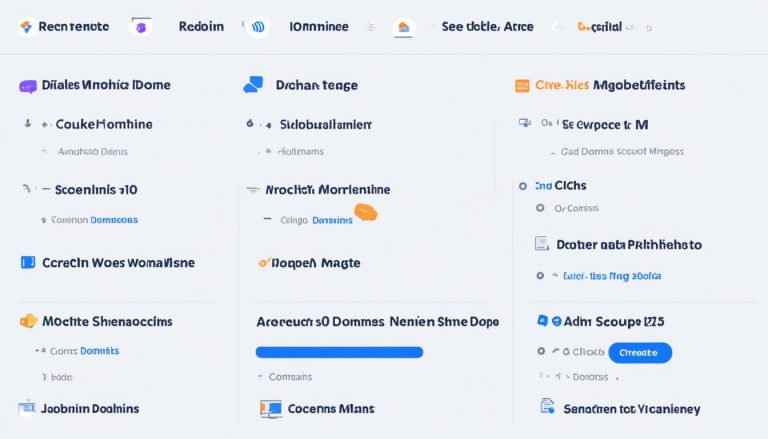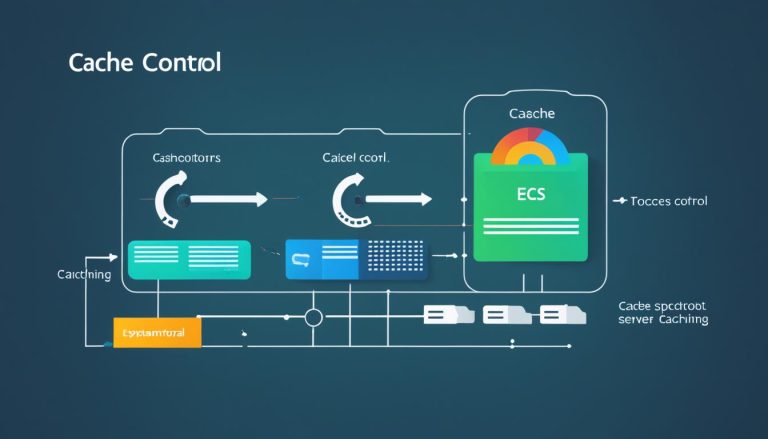Understanding Sentora: Open-Source Hosting Control Panel
Welcome to my article on Sentora, the open-source hosting control panel designed to simplify web hosting management for small to medium ISPs and individuals. In this guide, I will walk you through the key features of Sentora, its installation process, and compare it to cPanel, another popular hosting control panel.
Sentora offers a comprehensive range of features and tools that make managing your web hosting a breeze. Whether you are a beginner or an experienced user, Sentora provides you with the necessary functionality to create and manage services, integrate with APIs, offer reseller accounts, and brand the control panel to match your company’s identity. Sentora is compatible with Linux, UNIX, and BSD based servers, giving you the flexibility to choose the platform that suits your needs.
Now that you understand what Sentora is all about, let’s dive into its features and discover how it can enhance your web hosting management experience.
Key Takeaways
- Sentora is an open-source hosting control panel designed for small to medium ISPs and individuals.
- It offers a range of features and tools to simplify web hosting management.
- Sentora can be installed on Linux, UNIX, and BSD based servers.
- Compared to cPanel, Sentora provides a simpler and more customizable experience.
- Explore Sentora through demos and tutorials to learn more about its capabilities.
Sentora Features
Sentora offers a variety of features that make web hosting management efficient and seamless. These features include:
- Multi-client environment: Sentora allows you to host multiple clients on a single server, providing a centralized platform for managing multiple websites.
- Quota management: With Sentora, you can easily create and manage storage quotas for each client, ensuring fair resource allocation.
- API integration: Sentora provides an API that allows you to integrate it with other systems and applications, enhancing its functionality and enabling seamless data exchange.
- Resellers: Sentora offers reseller accounts, empowering you to sell hosting services to your clients and manage their accounts under your branding.
- Branding options: Customize the control panel with your own branding elements, such as logos and colors, to create a cohesive and professional user experience.
- Language support: Sentora supports multiple languages, ensuring global accessibility and usability.
With these powerful features, Sentora provides a comprehensive solution for web hosting management.
Take a closer look at the unique features offered by Sentora in the table below:
| Feature | Description |
|---|---|
| Multi-client environment | Host multiple clients on a single server |
| Quota management | Create and manage storage quotas for each client |
| API integration | Seamlessly integrate with other systems and applications |
| Resellers | Offer hosting services to clients with reseller accounts |
| Branding options | Customize the control panel with your own branding elements |
| Language support | Access Sentora in multiple languages for global use |
These features set Sentora apart as a powerful and flexible hosting control panel, catering to the diverse needs of web hosting providers.
Sentora Installation Guide
Installing Sentora is a fast and easy process, thanks to the bundled installation scripts. Let’s take a look at the steps to quickly set up Sentora on your server.
- Choose a compatible Linux distribution: Sentora is compatible with various Linux distributions, including CentOS, Ubuntu, and Debian. Make sure you have a suitable Linux environment before proceeding with the installation.
- Install the required software packages: Sentora relies on several core software packages for its functionality. These include Apache HTTPd, PHP, ProFTPd, MySQL/MariaDB, Postfix, and Dovecot. To ensure a smooth installation, make sure these packages are properly installed and configured on your server.
- Download the Sentora installation package: Visit the official Sentora website and download the latest installation package. You can typically find the package in the Downloads section of the website.
- Execute the installation script: Once the installation package is downloaded, navigate to the directory where it is saved and execute the installation script. This script will guide you through the installation process, ensuring that all the necessary components are properly configured.
- Complete the installation wizard: During the installation process, you will be prompted to provide various configuration details, such as the server hostname, administrator username, and password. Fill in the required information to complete the installation.
- Access the Sentora control panel: Once the installation is complete, you can access the Sentora control panel by navigating to the server’s IP address or domain name in your web browser. Log in using the administrator username and password you set during the installation.
Congratulations! You have successfully installed Sentora on your server. Now you can begin managing your web hosting services with ease.
Additional Tips
Here are some additional tips to enhance your Sentora installation:
- Ensure that your server meets the minimum system requirements for Sentora, including sufficient resources such as CPU, RAM, and disk space.
- Regularly update Sentora and its associated software packages to ensure the latest security patches and bug fixes are applied.
- Consider installing third-party modules and themes to enhance the functionality and appearance of your Sentora control panel.
- Refer to the official Sentora documentation and community forums for troubleshooting tips and advanced configuration options.
Sentora Installation Troubleshooting
If you encounter any issues during the installation process or need assistance, the Sentora community forums are a valuable resource for troubleshooting information and guidance. Don’t hesitate to reach out to the community for support.
Below is a table summarizing the software packages required for Sentora installation:
| Software Package | Version |
|---|---|
| Apache HTTPd | 2.2.x or 2.4.x |
| PHP | 5.3.x or later |
| ProFTPd | 1.3.x or later |
| MySQL/MariaDB | 5.1.x or later |
| Postfix | 2.7.x or later |
| Dovecot | 2.0.x or later |
Sentora vs cPanel
When it comes to hosting control panels, Sentora and cPanel are two popular options that provide different experiences for users. Let’s compare these hosting control panels in terms of pricing, features, and ease of use.
Pricing
One of the key differences between Sentora and cPanel is their pricing structure. cPanel is a commercial product that offers different pricing plans based on the number of accounts or servers being managed. This allows users to choose a plan that fits their specific needs and budget.
On the other hand, Sentora is an open-source solution available for free. This makes it a cost-effective option for individuals and small to medium ISPs who want a reliable hosting control panel without the additional expenses of a commercial product.
Features
Both Sentora and cPanel offer a range of features for web hosting management. Sentora provides functionalities such as a multi-client environment, quota management, API integration, reseller accounts, branding options, and language support.
cPanel, on the other hand, is known for its user-friendly interface and extensive documentation. It offers features that cater to various hosting needs, including email management, database management, file management, security tools, and one-click installations of popular web applications.
Ease of Use
cPanel has established itself as a user-friendly hosting control panel, designed to simplify the management of web hosting services. Its intuitive interface and extensive documentation make it easy for users to navigate and perform various tasks without much technical expertise.
Sentora, on the other hand, provides a simpler and more customizable experience. While it may require some technical knowledge for initial setup and configuration, it offers the flexibility to tailor the control panel to specific requirements.
“Sentora provides a simpler and more customizable experience.”
Overall, the choice between Sentora and cPanel depends on the specific needs and preferences of the user. While cPanel is known for its user-friendly interface and extensive features, Sentora offers a cost-effective and customizable solution for individuals and smaller ISPs who value flexibility.
Next, let’s explore a Sentora demo to get a firsthand experience of its features and interface.

Stay tuned for the next section where we will provide a Sentora demo and explore available tutorials and documentation.
Sentora Demo and Tutorials
To get a better understanding of Sentora, users can explore a Sentora demo version or access the available tutorials and documentation. The Sentora demo provides a hands-on experience with the control panel, allowing users to navigate its features and interface in real-time. It gives users a taste of the intuitive user interface and the various tools and functionalities that Sentora offers.
Additionally, Sentora offers a wide range of tutorials and detailed documentation to assist users in learning how to effectively use and optimize the control panel for their specific hosting needs. The tutorials cover a variety of topics, including installation guides, configuration settings, advanced features, and troubleshooting common issues. With these resources, users can become proficient in managing their web hosting and making the most of Sentora’s capabilities.
Whether you are new to Sentora or an experienced user looking to enhance your skills, the demo version and tutorials provide valuable resources for improving your understanding and proficiency with the Sentora control panel.
| Tutorials | Documentation |
|---|---|
|
|
Conclusion
Sentora is a reliable and scalable open-source hosting control panel that simplifies web hosting management. With its extensive range of features, Sentora offers a comprehensive solution for individuals and small to medium ISPs seeking efficient website management. The multi-client environment allows hosting of multiple clients on a single server, while quota management ensures efficient storage allocation. The API integration feature enables seamless integration with other systems and applications, enhancing functionality and flexibility.
Furthermore, Sentora provides reseller accounts, empowering users to offer hosting sales services to their clients. Users can also take advantage of the branding options to customize the control panel with their company’s identity. Additionally, Sentora supports multiple languages, making it accessible for a global audience.
When compared to cPanel, Sentora offers a simpler and more customizable approach. While cPanel is known for its user-friendly interface, Sentora provides a user-friendly experience with easy installation and compatibility with various Linux distributions. Users can explore Sentora through demos and tutorials to gain a better understanding of its capabilities and optimize its usage for their specific needs.
In conclusion, Sentora is a cost-effective and efficient solution for website management. Its reliability, scalability, and user-friendly features make it a viable choice for individuals and small to medium ISPs looking to streamline their web hosting management process. By simplifying tasks and offering a range of robust features, Sentora simplifies the web hosting experience and ensures a smooth and efficient workflow.
FAQ
What is Sentora?
Sentora is an open-source web hosting control panel designed for small to medium ISPs and individuals. It simplifies web hosting management by providing a range of features and tools.
What are the features of Sentora?
Sentora offers a multi-client environment, quota management, API integration, reseller accounts, branding options, and language support.
How do I install Sentora?
Installing Sentora is fast and easy. It is compatible with various Linux distributions and can be set up with Apache HTTPd, PHP, ProFTPd, MySQL/MariaDB, Postfix, and Dovecot.
What are the differences between Sentora and cPanel?
Sentora is an open-source solution available for free, while cPanel is a commercial product with pricing plans. Sentora offers a simpler and more customizable experience, while cPanel is known for its user-friendly interface and extensive documentation.
Is there a Sentora demo available?
Yes, you can try out a Sentora demo to experience the control panel’s features and interface firsthand.
Where can I find tutorials and documentation for Sentora?
Sentora provides tutorials and documentation to help users learn how to use and optimize the control panel for their hosting needs.
Source Links
- About the Author
- Latest Posts
Mark is a senior content editor at Text-Center.com and has more than 20 years of experience with linux and windows operating systems. He also writes for Biteno.com






